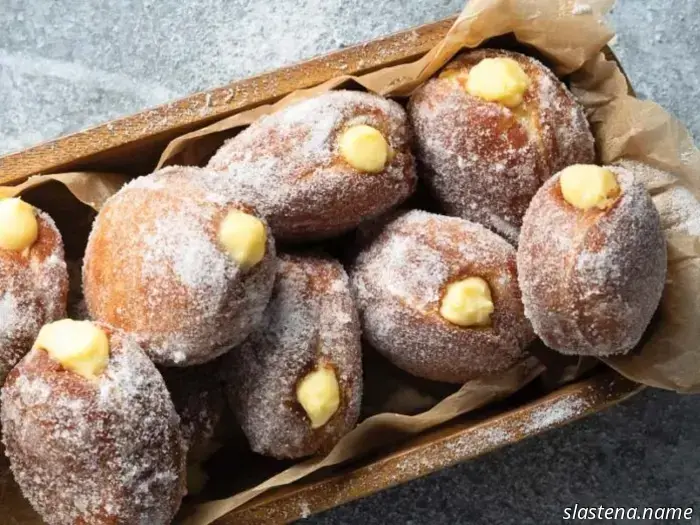
Malasadas - Bake from Scratch.
I first discovered malasadas while in Hawai‘i, although their origins lie far across the globe in Portugal. Introduced to the Hawaiian islands by Portuguese immigrants, malasadas were a connection to their homeland in this new environment. In a setting filled with the aromas of tropical fruits and the ocean stretching endlessly, malasadas evolved to reflect a different cultural identity.
The history of malasadas goes back hundreds of years. Their name likely derives from the Portuguese terms "mal" (meaning "bad") and "assado" (meaning "roasted" or "baked"), possibly referring to their irregular shapes rather than their flavors. Initially, they were a delicacy made in convents, where Portuguese nuns mastered the art of creating rich doughs with eggs and sugar-coated pastries. Over time, malasadas became a cherished treat in Portuguese households, particularly for celebrations and occasions leading up to Lent.
In the 1870s, many Portuguese immigrants from the Azores and Madeira arrived in Hawai‘i to work on sugarcane plantations, bringing with them their culture, traditions, and cuisine. Malasadas swiftly became a popular delight on the islands, especially within the large Portuguese community. As time passed, local bakeries like Leonard’s Bakery played a key role in introducing them to a wider audience, establishing them as a vital part of Hawaiian culinary culture. They adapted to include local ingredients such as haupia (coconut filling), liliko‘i (passion fruit), and guava, further securing their place as a beloved island custom.
Unlike traditional ring doughnuts, malasadas are round and golden, slightly uneven in shape, with each one having its own unique character. They puff up in hot oil, achieving a crispy, bronzed exterior before being coated in sugar while still warm. The first bite reveals a crunchy outer layer that gives way to an incredibly soft inside—airy, buttery, and rich in eggs and milk.
Traditionally, malasadas were made to use up butter and lard before Lent, serving as a final treat before the fasting season began. This is why Malasada Day is celebrated on Shrove Tuesday in Hawai‘i, where they've become as integral to local culture as poke or shaved ice. In homes and bakeries around the islands, people queue up for a dozen or more, each still warm from frying, with some dusted in cinnamon sugar and others filled with custard, passion fruit cream, or haupia.
The first time I tasted a malasada, I was outside Leonard’s Bakery in Honolulu, surrounded by the fragrant aroma of sugar and fried dough. I chose the classic version—plain with sugar—and when I bit into it, I was amazed by its softness and lightness, standing there in awe as the warm dough melted in my mouth. It tasted like childhood and festive treats, a reminder of mornings filled with gentle possibilities. Once I finished one, I immediately craved another.
Making malasadas at home is a delightful process. The dough is enriched with eggs, butter, and milk, allowed to rise until it becomes airy. Some variations include a hint of citrus zest or rum, paying homage to their Portuguese roots. After rising, the dough is formed—sometimes into balls, other times into slightly flattened shapes—and fried until golden brown. Once they emerge from the oil, they are coated in sugar, the granules adhering to the hot surface and creating that essential delicate crunch.
The first bite is always the best—the crispy exterior yielding to the soft inside makes malasadas utterly irresistible. While the traditional sugar-coated ones are delightful on their own, those filled with cream offer a different experience altogether. Silky pastry cream flows from the center, sometimes with specks of vanilla beans or a tangy hint of tropical fruit. The richness of the dough paired with the cool filling creates a contrast that compels you to savor the moment with your eyes closed for just a second longer.
Around the globe, similar treats exist: pączki in Poland, Berliners in Germany, and bomboloni in Italy. However, malasadas, rooted in Portugal yet deeply embraced by Hawai‘i, feel uniquely special. They are indulgent but light, sweet without being overwhelming, familiar yet capable of transporting you somewhere else.
Whenever I long for a taste of sunshine, particularly on dreary days, I make malasadas. The act of mixing the dough and allowing it to rise assures me that warm, golden treats will soon be available to coat in sugar and enjoy while still hot. These pastries remind me that food can be a true source of happiness; often, the simplest ingredients—a bit of dough, a sprinkle of sugar—can provide the greatest joy. Isn’t that what we all seek? A reminder of warmth and sweetness, the kind of food that evokes smiles and comfort. Malasadas embody that feeling—pure sunshine in edible form.
**Makes 12 to 14 doughnuts**
Malasadas, a cherished delicacy in Hawai‘i,






Other articles
Malasadas - Bake from Scratch.
Malasadas, a cherished delicacy in Hawai‘i, are deep-fried doughnuts that represent both indulgence and cultural tradition.
